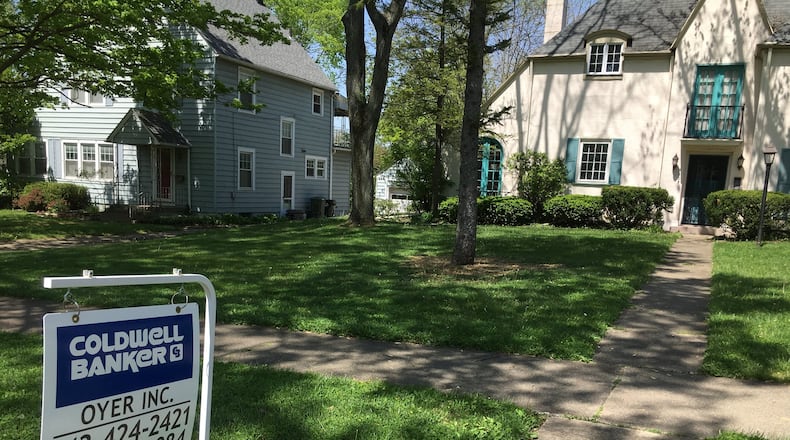Council will give its final approval for a new housing policy for the next 10 to 20 years and included in the city’s new comprehensive master plan at its Sept. 2 meeting.
MORE: Middletown gets Butler County support for housing overhaul
The committee used a study completed in December 2016 by the Danter Company, which specializes in real estate research, that indicated the city was no longer competitive in southwest Ohio’s real estate market.
The Butler County Auditor’s Office found that Middletown property valuation dropped more than $58 million from 2011-15 when many other communities in the county saw property values rising after the Great Recession.
The community committee spent more than a year studying issues facing Middletown and its housing stock and developed a new policy. The committee met for several months discussing the issues and identifying some strategies for the next 10 to 20 years. While the meetings were closed, information, reports and videos of the discussions were made of each meeting and posted to the city's website.
“We had the best professional people and very diverse group on the committee,” Adkins said. “We would not have been able to do it without their help.”
The committee identified goals to improve the city’s housing stock over the next 10 to 20 years. They include:
• Reducing the number of rental housing
• Increasing owner-occupied housing
• Developing a stock of next-level housing with three or more bedrooms beyond starter housing
• Building more homes with a starting price-point of $150,000 or higher
• Compliance with property maintenance codes
• Developing buffers from residential to commercial to industrial areas
• Increasing investment and reinvestment throughout Middletown
• Targeting neighborhoods for revitalization, such as the Oakland neighborhood
MORE: Middletown leader details hurdles to overcome to solve housing issues
Adkins showed a 1961 map of substandard conditions of dilapidated or deteriorating housing in Middletown. About 55 years later, trouble areas remain the same.
He said for more than 50 years, “we’ve identified problems but have never resolved them.”
“We have to fix it or destroy it,” Adkins said.
The Danter study found that the best results are from demand for housing, not just limited supply; there was significant potential for mixed use, residential, retail and commercial units; multiple types of rental housing was recommended to include market-rate complexes, townhouses and gated luxury units; and to develop housing over downtown storefronts.
Adkins said 70 percent of the homes in Middletown are small houses with two bedrooms. He said there is no place to go in the city after starter housing, which is why growing families opt to move to other communities. About 47 percent of the city’s housing is rental. In the rest of the county, 28 percent of housing is rental.
He said about 52.6 percent of Middletown homes are owner-occupied, and the rest of Butler County is about 71.5 percent.
The Danter study identified there was an estimated annual demand in Middletown for: 127 single family homes priced between $150,000 and more than $500,000; 670 multi-family units; and 33 condominiums between $150,000 and more than $500,000.
MORE: Middletown residents form group in response to housing discussions
Adkins said where it’s possible, the plan “would go from the least intrusive to most intrusive changes” and will expect a better looking city, more diverse housing stock and an increase of the city’s tax base valuation.
The committee’ plan focuses on vacant property, out-of-town landlords when property becomes vacant, local landlords when property becomes vacant, then homeowners. Adkins said the city will also initiate tax foreclosures from least intrusive to most intrusive impact.
MORE: Consultants ready to move on to next phase of this Middletown neighborhood project
Adkins said the Oakland neighborhood was targeted because of its high disinvestment rate; a high concentration of children who attend Middletown City Schools; and the former middle school has been razed for redevelopment.
He also said he has been talking to people about reinvesting in the city’s South End in the next 14-15 months.
Middletown Housing Committee members
- Doug Adkins, city manager and facilitator
- Steve Bohannon, City Council representative
- Ami Vitori, City Council alternate
- Ashley Combs, city planner
- Pastor Torri Colts, public member and Community Aligned for Real Equity (CARE) representative
- Celeste Didlick-Davis, public member and CARE representative
- Jason Hightower, local businessman and CARE representative
- Wendy Hunter, residential Realtor at Coldwell Banker Oyer
- Marc Dixon, residential banker at Guardian Savings
- Lenny Robinson, local developer
- Walter Leap, Local Realtor and landlord
- Dan Fishbaugh, Fishbaugh Homes, new construction
- Dickey Brandon, local home remodeler and landlord
- Middletown Police, Middletown Fire and Middletown Health deparments as needed for various issues
SOURCE: City of Middletown
Middletown Housing - By the Numbers
- $58.4 million - Drop in Middletown residential property values from 2011-2015
- $6.19 million - amount of delinquent property taxes due from 1,276 parcels.
- $4.57 million - amount of delinquent property taxes owed by the 1,276 parcel owners to the Middletown City School District
- $590,477 - amount of delinquent property taxes owed by the 1,276 parcel owners to the city of Middletown
- $392,595 - estimated amount owed by 304 accounts that have not filed a city income tax return for the past two years
- $250,000 - amount city of Middletown pays to mow more than 500 vacant residential properties each year
- $36,898 - U.S. Census 2016 estimate of median family income in Middletown
- 22,985 - number of total housing units in Middletown
- 10,298 - Number of owner-occupied housing units in Middletown, about 52.6 percent
- 9,286 - Number of renter-occupied housing units in Middletown, about 47.4 percent
- 3,401 - 2016 Census estimate of vacant housing units in Middletown
- 2,000-plus - number of homes in the buffer between housing and heavy industrial uses
- 1,276 - Number of parcels in Middletown that have delinquent property taxes due
- 670 - Estimated yearly demand for multi-family units with a rent range of $750 to $1,900 a month
- 127 - Estimated yearly demand for single-family homes with a price range of $150,000 to $500,000 and up
- 304 - number of accounts who have not filed a city income tax return for the past two years to
- 36.4 - Percentage for new Middletown overall rental housing goal
- 33 - Estimated yearly demand for condominiums with a price range of $150,000 to $500,000 and up
- 30.3 to 54 - 2015 percentage of total population below poverty level by Census tracts
- 27.7 - Percentage of rentals in Butler County, about 32,959 units, excluding Middletown
SOURCES: Danter Company 2016 housing study of Middletown; Butler County Auditor’s Office; U.S. Census Bureau estimates; Middletown Housing Committee; and the city of Middletown
About the Author

